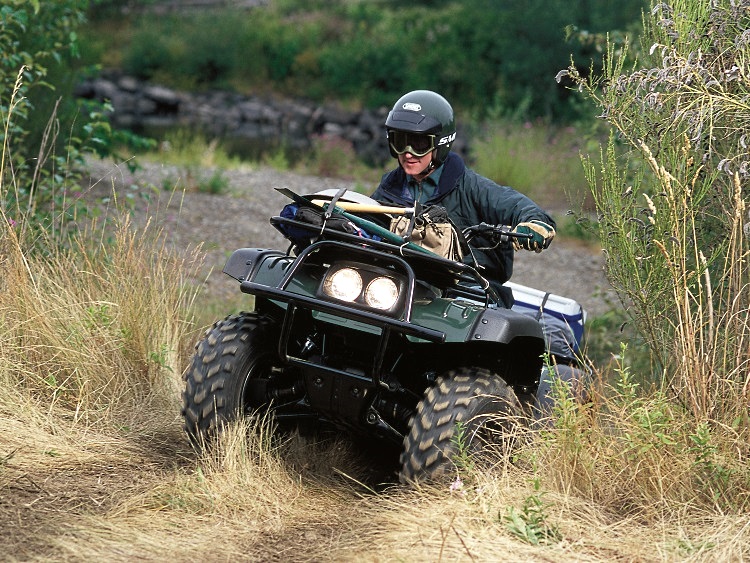The summertime weather brings many people out to explore the backcountry and rural areas which is prompting Alberta Health Services (AHS) to remind Albertans that they need to make all-terrain vehicle (ATV) safety a priority.
AHS Medical Officer of Health for the Calgary Zone, which includes Airdrie, Dr. Christine Kennedy, says ATVs pose a significant risk to all users but in particular to children under the age of 16 who likely don't have the strength, skills or judgment needed to operate one.
"Between Apr. 1, 2018 and Apr. 1. 2019, 78 children were seen in Alberta's two pediatric emergency departments due to ATV related injuries. Thirty-one of them required hospital admission and one, unfortunately, passed away," explains Kennedy. "That's not an insignificant number of children in Alberta who have gotten injuries from being around or on ATVs."
AHS urges parents to protect children under the age of 16 by ensuring they don't drive or even ride, on an ATV. That includes ones that are marked as "child-sized.' Kennedy says ATV safety equipment is meant for adults, not children.
"For example, the restraints, the rollover prevention mechanisms on the vehicle are all designed to suit an adult and be applied to an adult. They are not meant to act as safety features for children."
Kennedy says the most common injuries on ATVs are head injuries. "From 2002 to 2013, 41 per cent of ATV rider deaths were due to head injuries," according to Kennedy. "In 77 per cent of these head injury deaths, the ATV riders were not wearing a helmet. That is a big part of the injuries."
Kennedy explains that, among kids, rollover injuries, where the machine becomes unstable and rolls onto the rider or passengers, are also very common.
AHS has compiled a list of precautions that, if followed, will help you stay safe year-round when on your ATV.
- Get trained: Before you hit the trails, get formal hands-on training from a recognized/trained ATV instructor. Don’t be shy about refreshing your training seasonally.
- Wear the gear: Always wear a helmet. CSA-compliant helmets must be worn by ATV users when riding on public land but a helmet worn every ride can save your life. In addition to a helmet, always wear a jacket, long pants, goggles, boots, and gloves.
- Look first: Be sure you’re aware of the weather forecast, fire outlook/potential, and any hazards (geographical, animal or human) or risks that the trail(s) could pose. Ensure your ATV is equipped with an appropriate headlamp.
- Buckle up: Be sure you’re fastened in properly and that all gear and equipment (including your ATV restraints) are in proper working condition before you hit the trails.
- Drive sober: Don’t drink or do drugs before or while operating an ATV; 55 percent of those who died in ATV crashes between 2002 and 2013 tested positive for alcohol.
- Seek help: Before you head out on the trail, let others know where you’re going and when they should expect you back. This helps your loved ones know when to call for help if you’ve been gone too long. Take a cellphone or working radio with you, as well as a first-aid kit.
You'll find the Alberta Health Services ATV Safety Toolkit here.




